Piezoelectric sensor introduction and development direction
Piezoelectric sensors can measure a variety of dynamic forces, mechanical shocks and vibrations, and are widely used in acoustics, medicine, mechanics, and navigation. It features small size, light weight, high frequency response, and large signal-to-noise ratio.
Piezoelectric sensor
The working principle of the piezoelectric sensor is based on the piezoelectric effect of some dielectric materials and is a typical active sensor. When the material is deformed by the force, there will be a charge generated on the surface, so as to achieve non-electricity measurement.
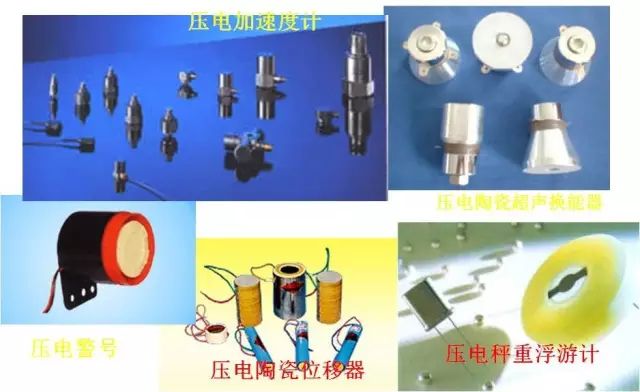
Piezoelectric effect
Some dielectrics, when they are deformed by applying force along a certain direction to deform it, generate polarization inside, and at the same time generate opposite-sign charges on its two surfaces. When the external force is removed, it is renewed. Restore to the uncharged state, this phenomenon is called piezoelectric effect. Conversely, when an electric field is applied in the direction of dielectric polarization, these dielectrics also deform, a phenomenon called the "converse piezoelectric effect" (electrostrictive effect).
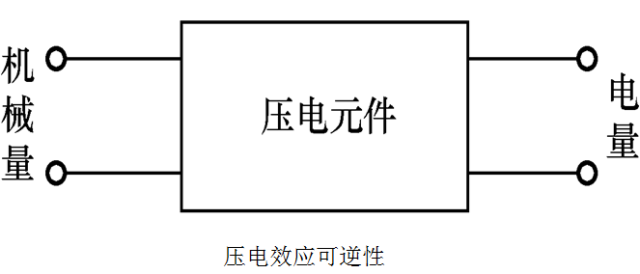
Piezoelectric material
Quartz crystals, barium titanate, and lead zirconate titanate are excellent piezoelectric materials. There are generally three types of piezoelectric element materials used in piezoelectric sensors: piezoelectric crystals, piezoelectric ceramics that have undergone polarization treatment, and novel piezoelectric materials.
They all have larger piezoelectric constants, good mechanical properties, good time stability, and good temperature stability, so they are ideal piezoelectric materials.
1, piezoelectric crystal

Naturally formed quartz crystal shape
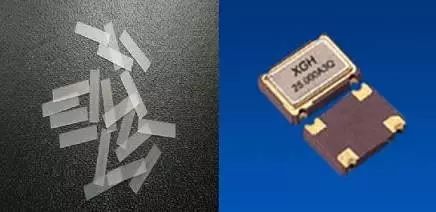
Quartz crystal slicing and packaging
When the quartz crystal is operated in the oscillation circuit, the piezoelectric effect and the inverse piezoelectric effect alternate, thereby producing a stable oscillation output frequency.
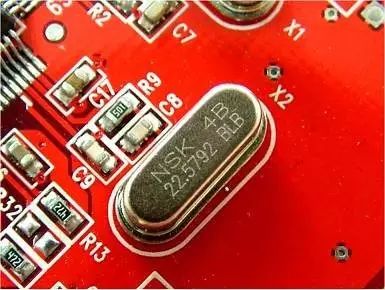
Quartz crystal oscillator (crystal oscillator)
Quartz crystals are a widely used piezoelectric crystal. It is a single crystal of silicon dioxide and belongs to the hexagonal system. It is a regular hexagonal prism. The quartz crystal has three crystal axes: the x-axis, the y-axis, and the z-axis. The vz axis, also known as the optical axis, is in line with the longitudinal axis of the crystal: the x-axis, also known as the electrical axis, passes through the two ridges of the hexahedron and is perpendicular to the optical axis: the y-axis, also known as the mechanical axis, is perpendicular to the two Opposite crystal pillars.
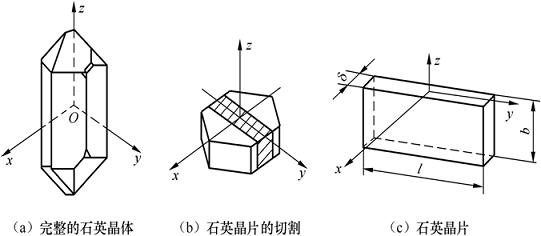
The piezoelectric effect of a quartz crystal is related to its internal structure, and the mechanism of the polarization phenomenon can be explained. The chemical formula of quartz crystal is SiO2, and there are three silicon ions and six oxygen ions in each unit cell, one silicon ion and two oxygen ions are alternately arranged (oxygen ions appear in a team). Looking along the optical axis, a regular hexagonal arrangement can be considered equivalently.
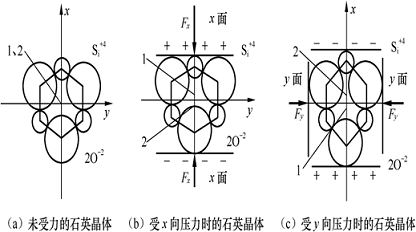
In the figure 1 - positive charge equivalent center 2 - negative charge equivalent center
(1) When no external force is applied
(2) When the crystal is subjected to pressure in the direction of the electric axis (x axis), the crystal lattice is deformed
(3) Similarly, when the crystal is subjected to pressure in the direction of the mechanical axis (y-axis), lattice distortion occurs.
(4) When the optical axis (z-axis) direction of the crystal is subjected to a force, the piezoelectric effect does not occur because the deformation of the crystal lattice does not cause the separation of the positive and negative charge centers.
When the force in the direction of the machine axis acts on the crystal, the generated charge is related to the geometric dimension of the crystal section. The negative sign in the formula indicates the charge polarity caused by the pressure along the mechanical axis and the charge polarity caused by the pressure along the electric axis. Just the opposite.
2, piezoelectric ceramics
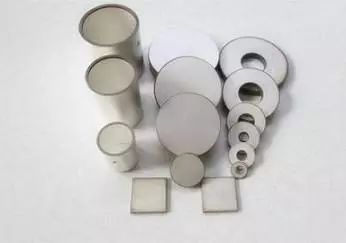
Piezoelectric ceramics are man-made polycrystalline piezoelectric materials. The grains inside the material have many self-polarized domains, which have a certain polarization direction and thus an electric field. In the absence of an external electric field, the domains are randomly distributed in the crystal, their respective polarization effects are cancelled out, and the polarization in the piezoelectric ceramic is zero. Therefore, the original piezoelectric ceramic is neutral and has no piezoelectric properties.
When an external electric field is applied to the ceramic, the polarization direction of the electric domain rotates, tending to be arranged in the direction of the external electric field, so that the material is polarized. The stronger the external electric field, the more electric domains are more completely turned toward the external electric field. Let the intensity of the external electric field be so large that the polarization of the material is saturated, that is, when the polarization direction of all the electric domains is neatly aligned with the direction of the external electric field, when the external electric field is removed, the polarization direction of the electric domain is basically unchanged, ie, The remnant polarization is large, and the material at this time has piezoelectric properties.
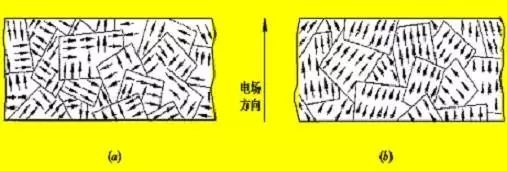
Piezoelectric polarization (a) Unpolarized; (b) Electrodes
The piezoelectric coefficient of piezoelectric ceramics is much larger than that of quartz crystals, so piezoelectric sensors made of piezoelectric ceramics have higher sensitivity. The remanent polarization strength and characteristics of the piezoelectric ceramic after polarization treatment are related to the temperature, and its parameters also change with time, thereby weakening its piezoelectric characteristics.
3, a new type of piezoelectric material
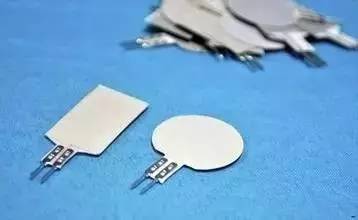
Piezoelectric film
(1) Piezoelectric semiconductor materials
Piezoelectric semiconductor materials are ZnO, CdS (cadmium sulfide), CdTe (cadmium telluride), etc. This force-sensitive device has the advantages of high sensitivity and short response time. In addition, ZnO is used as a surface acoustic wave oscillator piezoelectric material, which can detect parameters such as force and temperature.
(2) Polymer Piezoelectric Materials
Some synthetic polymer films have certain piezoelectric properties after being stretched and polarized by an electric field. Such films are called polymeric piezoelectric films. At present, there are piezoelectric films such as polyvinylidene fluoride PVF2, polyvinyl fluoride PVF, polyvinyl chloride PVC, poly-gamma methyl-L glutamic acid ester PMG and the like. The piezoelectric polymer material is a soft piezoelectric material that is not easily broken and can be mass produced and made into a larger area.
4, the main characteristics of piezoelectric materials
1) Piezoelectric constant: Piezoelectric constant is a parameter that measures the strength and weakness of a material's piezoelectric effect. It is directly related to the sensitivity of the piezoelectric output.
2) Elastic constant: The elastic constant and stiffness of the piezoelectric material determine the natural frequency and dynamic characteristics of the piezoelectric device.
3) Dielectric constant: For a given shape and size of a piezoelectric element, its inherent capacitance is related to its dielectric constant, which in turn affects the lower frequency limit of the piezoelectric sensor.
4) Mechanical coupling factor: In the piezoelectric effect, its value is equal to the square root of the ratio of the output energy (eg, electrical energy) to the input energy (eg, mechanical energy); it is an important parameter to measure the electromechanical energy conversion efficiency of the piezoelectric material.
5) Insulation resistance of a resistive piezoelectric material: This will reduce charge leakage and thus improve the low-frequency characteristics of piezoelectric sensors.
6) Curie point: The temperature at which the piezoelectric material begins to lose its piezoelectric properties is called the Curie point.
Piezoelectric sensor measuring circuit
1. The equivalent circuit of piezoelectric sensor
Piezoelectric elements are formed by encapsulating the metal electrodes on the two crystal planes where the piezoelectric wafer generates charges. When a piezoelectric element is subjected to a force, a charge is generated at both electrodes. Therefore, the piezoelectric element corresponds to a charge source; between the two electrodes is an insulating piezoelectric medium, and therefore it is equivalent to a piezoelectric element. The material is a dielectric capacitor with a capacitance value of Ca = εRε0A/δ
The piezoelectric element is equivalent to a charge source connected in parallel with the capacitor, and can also be equivalent to a voltage source connected in series with the capacitor.
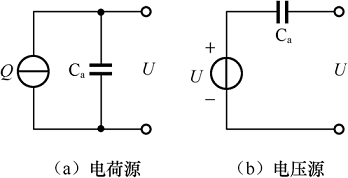
Piezoelectric sensors cannot be used for static measurements. The piezoelectric element can only be generated continuously under the action of alternating force, and can supply a certain current to the measurement circuit, so it is only suitable for dynamic measurement.

2, piezoelectric sensor measuring circuit
Piezoelectric sensors have high internal resistance and require a preamplifier circuit with a high input impedance to be connected with general amplification, detection, display, and recording circuits to prevent rapid leakage of charge and reduce measurement errors.
Piezoelectric sensor preamplifier has two roles: First, the sensor's high-impedance output into a low-impedance output; Second, the sensor's weak signal amplification.
According to the working principle of the piezoelectric sensor and its equivalent circuit, its output can be either a charge signal or a voltage signal. Therefore, the preamplifier to be matched also has two forms of a charge amplifier and a voltage amplifier.
Since the output voltage of the voltage preamplifier is related to the capacitance of the cable, charge amplifiers are currently used.
(1) Charge amplifier
v Parallel output type piezoelectric elements can be equivalently charged sources. The charge amplifier is actually a high-gain operational amplifier circuit with a feedback capacitor Cf
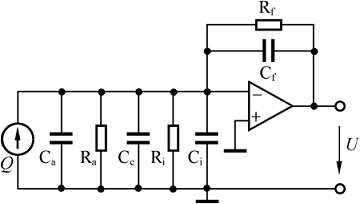
Charge amplifier schematic
The output voltage of the charge amplifier is only related to the input charge and feedback capacitance, and the effects of other factors such as cable capacitance are negligible.
(2) Voltage amplifiers (impedance converters)
The series output piezoelectric element can be equivalent to a voltage source, but the capacitance due to the piezoelectric effect is small, so the voltage source has a large equivalent internal resistance, and a preamplifier is required when connected to a voltage output type measurement circuit. Not only have sufficient magnification, but also have a high input impedance
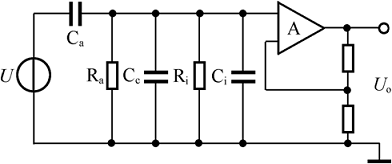
Piezoelectric sensor application
1, glass breaking alarm device
The polymer piezoelectric vibration measuring film is affixed to the glass, and the vibration that the glass breaks out can be felt, and the voltage signal is transmitted to the centralized alarm system.
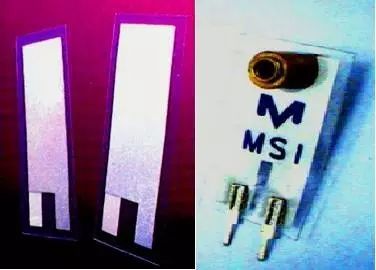
A PVDF film having a thickness of about 0.2 mm is cut to a size of 10 Ì20 mm. A transparent tin dioxide conductive electrode is sprayed on both sides of the front and back surfaces, and two flexible electrode leads are ultrasonically welded. And cover with a protective film.
When used, apply it to the glass with cyanoacrylate. When the glass is violently broken, the piezoelectric film experiences severe vibration and the surface generates charge Q, which produces a narrow pulsed alarm signal between the two output pins.
Piezoelectric sensors can only be applied to dynamic measurements. The charge generated by the external force acting on the piezoelectric element can only be saved without leakage, ie, the measurement loop needs an infinite input impedance, which is practically impossible, so the piezoelectric sensor cannot be used for static measurement. . Piezoelectric elements under the action of alternating force, the charge can be continuously replenished, can supply a certain current to the measurement circuit, it is only suitable for dynamic measurement (usually higher than 100Hz, but above 50kHz, the sensitivity decreases).
2. Piezoelectric perimeter alarm system
The long piezoelectric cable is buried in the shallow surface of the earth and can act as a distributed underground microphone or listening device. It can detect people's walking within a few tens of meters. It can also handle signals for wheeled or tracked vehicles. The system can tell. The following figure shows the output waveform of the measurement system.
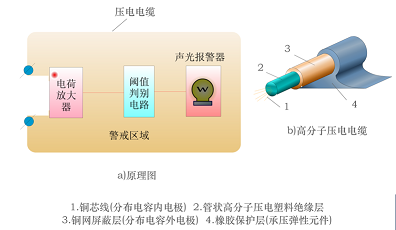
3. Traffic monitoring
The polymer piezoelectric cable buried on the highway, you can get vehicle classification information (including the number of axles, wheelbase, wheelbase, single and double tires), speed monitoring, toll booths, red light photography, parking area monitoring, traffic data collection (road monitoring) and airport taxiways.
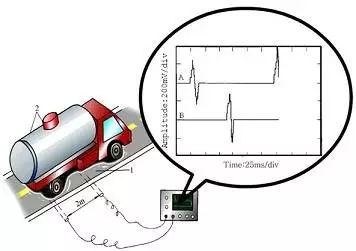
4, piezoelectric dynamic force sensor
Measurement of Dynamic Cutting Forces in Lathes

5, piezoelectric vibration acceleration sensor
The acceleration sensor can be used to determine the collision of the car, so that the airbag can be quickly inflated to save lives; it can also be installed on the side wall of the cylinder to try to make the ignition timing close to the knock zone without knocking, but it can make the engine Output as much torque as possible.
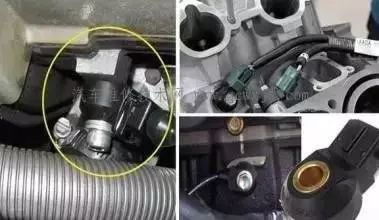
The ignition timing of the cylinder in an automobile engine must be very accurate. If the ignition timing is appropriately advanced, that is, there is an advance angle, the gas mixture of gasoline and air in the cylinder can be fully burned, the torque can be increased, and the blowdown can be reduced. However, if the advance angle is too large, the mixture gas will ignite spontaneously and a shock wave will be generated. A sharp metal knocking sound, called knocking, may cause the spark plug and piston ring to melt and damage, and overload the cylinder head, connecting rod, and crankshaft. , deformation, can be detected and controlled by a piezoelectric sensor.
To the direction of miniaturization and intelligence
Today's large precision systems are of great concern for quality and volume, and traditional bulky piezoelectric sensors will gradually lose their market. With the development of new materials and new processing technologies, silicon acceleration sensors made of various microfabrication technologies such as lasers are gradually replacing traditional ones due to their attractiveness of small size, interchangeability, and reliability. Piezoelectric sensor.
The function of the piezoelectric sensor has already broken through the traditional function, its output is no longer a single analog signal, but the digital signal after processing by the microcomputer, some piezoelectric sensors such as the integrated piezoelectric sensor itself have the control Function, this is called digital sensor.
As modern semiconductor technology becomes more advanced and mature, the future piezoelectric acceleration sensor will be integrated with subsequent processing circuits, and the size is smaller and the performance is better.
male-female connector,luminarie disconnect,Wire Terminal Block Led Connectors,Electric Wire Plastic Connector
Guangdong Ojun Technology Co., Ltd. , https://www.ojunconnector.com